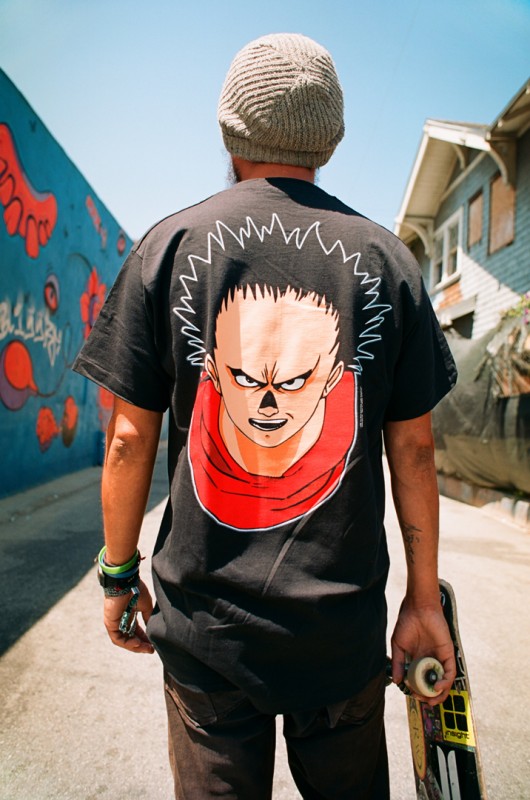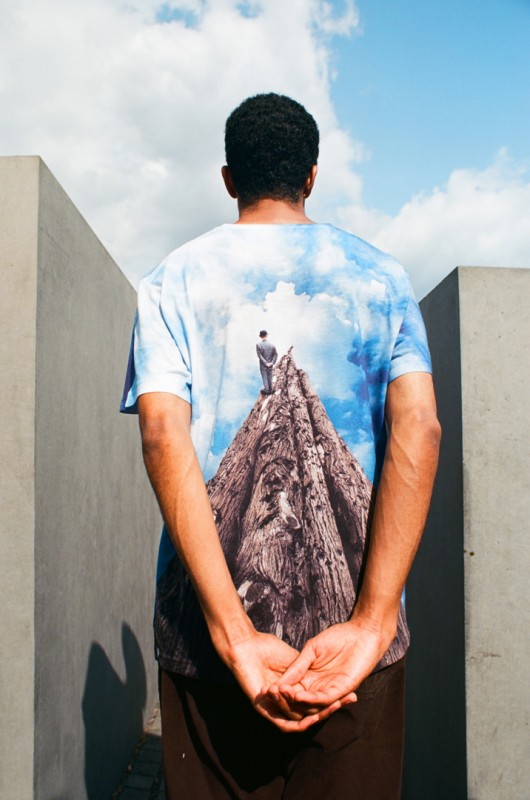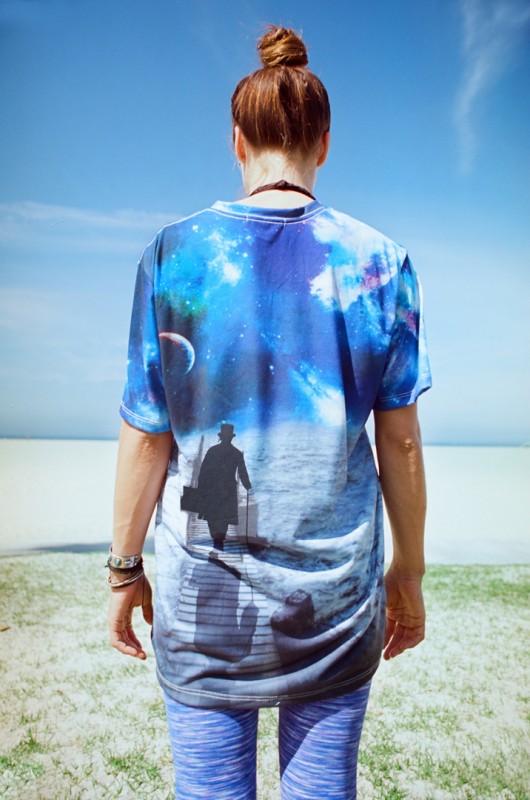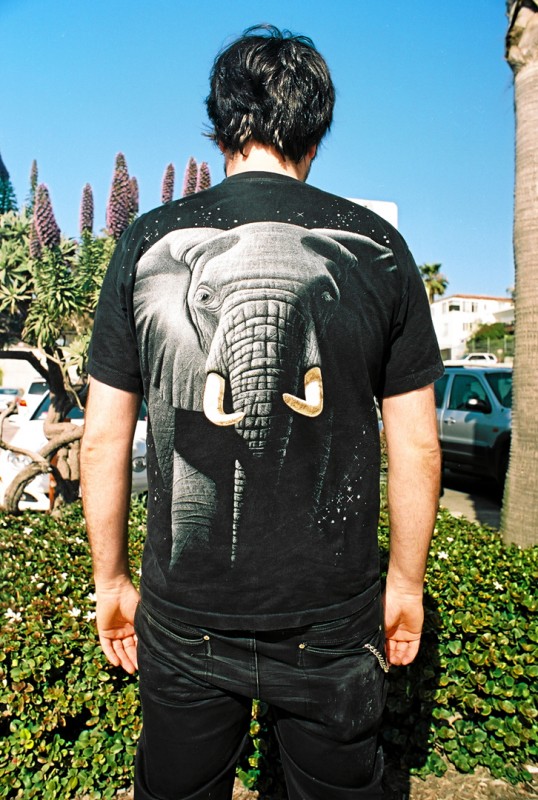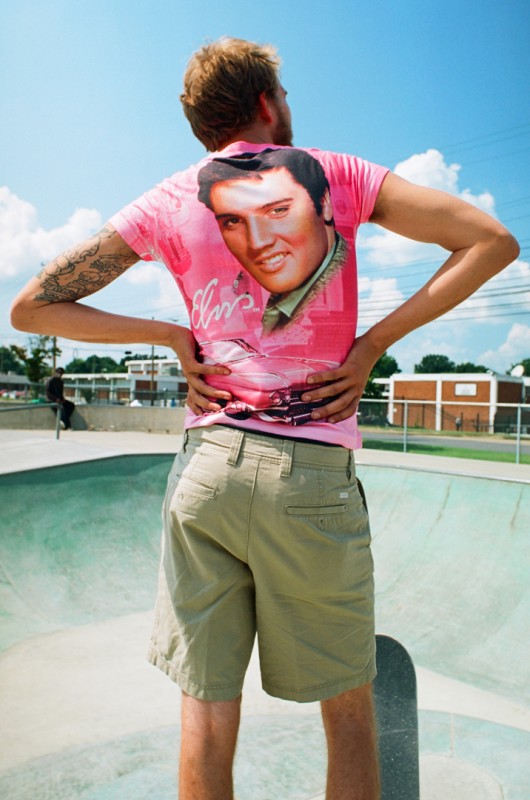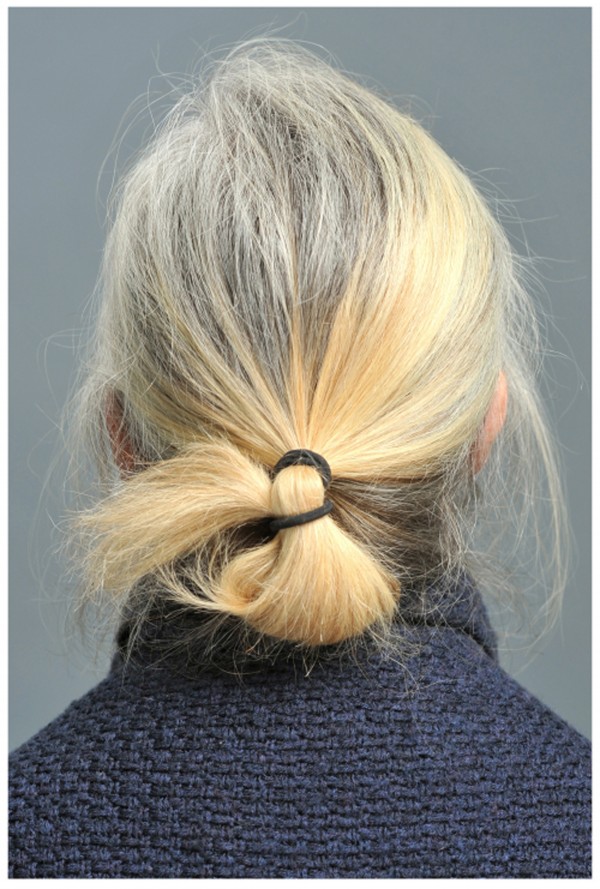Not In Your Face
Not In Your Face
Susan Barnett
December 18, 2015
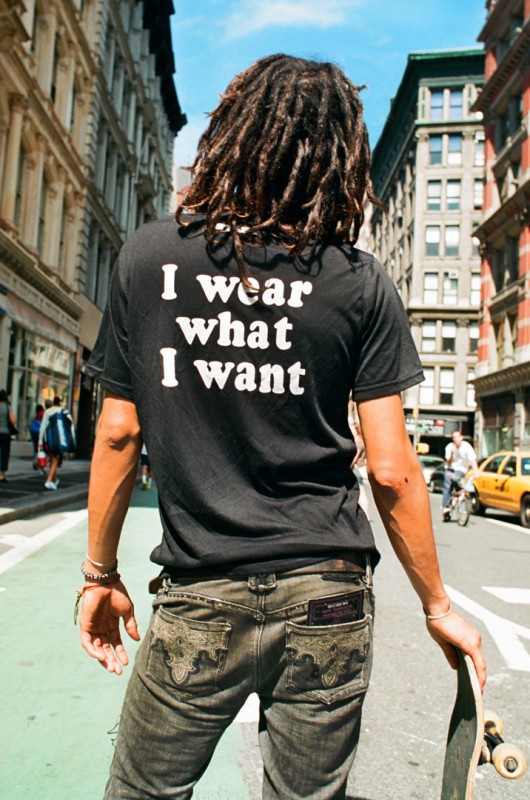
Read the full article in LFI 1/2016.
Susan, Not In Your Face has been your ongoing project since 2009, and you have more than 2000 images in your archives. What inspires you to go on with it?
I’ve always been interested in popular culture and its influence in our lives. I’ve done projects with other forms of symbols and the graphics of popular culture but now with people. Doing a typology with people necessitated a strict formal approach. I used the same lens, same depth of field depending on the scene and distance, so to speak, and same placement in the frame. In this case my method was predicated on the fact the figure is a vertical and I wanted to emphasize the T-shirt, so it necessitated the format. Although I’ve shot thousands of pictures, I’m able to remember each and every single photo shoot, thanks to the conversations I had before and while shooting my motifs. Since I have done this for several years, it’s now about time to give it a twist.
What is this twist about?
The defining point of my photos is the back – you don’t see someone’s expression. In the beginning, the message on the T-shirt was the starting point to show the way to their identity. The message became the substitute, in a way it became the expression. By taking away the expression I lead people to other clues like tattoos, hair-dos etc., aspects of personal experience you make assumptions about. So when I take the message away, I emphasize the back. The T-shirt drapes the body, it has the contours of the body. When you take it away, you look at the shape of the back, posture becomes a big issue. It tells you a lot about someone’s way of life, if he is sportive or sexy – about his or her identity. From the back you could say there’s something missing. But it’s the opposite, there is something added: a mystery! And it leads you to ask different questions about the person photographed. I will be developing the series by taking the T-shirt away. As I said, I wish for the viewer to find other clues.
The surroundings give a clear hint to who we are looking at: the print on the T-shirt very often relates to the surrounding. How did you manage to capture the interaction between the T-shirt and the background?
I often say that the gods are good to me. Sometimes I plan where I want to stand and hope that an appropriate T-shirt message will come by. The larger question though in how I prepare myself is my demeanour or my approach to the people on the street who are strangers to me. “Do you mind if I take your picture?” I have asked this about 3000 times. To get a yes I have to convince them in a split second – ask them to turn their back on me – and stand there in a very vulnerable position and pose for me. It’s all about trust. If I’m hesitant or don’t approach them with utter confidence and enthusiasm for what I am doing, they are more than likely to turn me down.
You are defining portrait photography in a new way by giving the viewer fewer details to deal with.
We always want to know who, when, where – and a classic portrait can give you answers. The message on the T-shirts puts something in the people’s mouths. I’d like to stress that there is definitely something besides the face: a signature appearance. I ask the question of identity from the back. Even though I’m taking their picture from behind, they’re smiling, because that’s the habit. Isn’t that funny? Interview: Carla Susanne Erdmann
Susan Barnett+-
Born in New Jersey in 1951. “I grew up both in front of and behind the lens of the camera,” Barnett explains. When she was still young her father started challenging her with little assignments. Barnett has a BA in History of Art and Art from Marymount College, Tarrytown.
During her time as a student, she worked at Perls Gallery in Manhattan. When the Perls Gallery closed in 1997, Barnett studied graphic design and computer-based photography at the School of Visual Arts in New York, before setting up her own studio in TriBeCa, location for the first T-shirt photos. More

